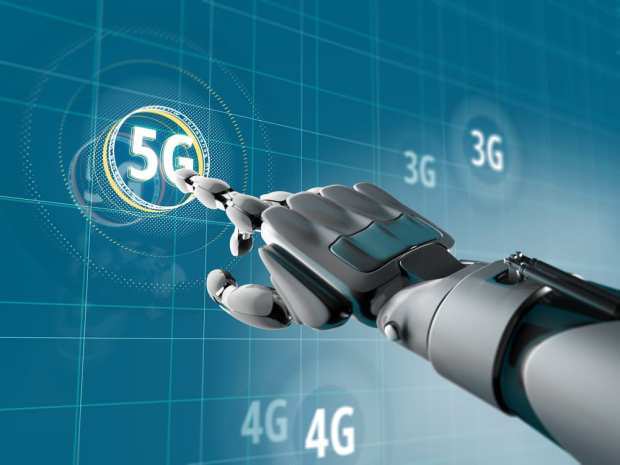5G Starts To Power Better Robots

So much starts with coffee – mornings, political ads, artistic movements, advances in QSR retail – and that dictum could hold true with robots, at least the next generation of robots that promise to be powered by 5G technology.
The world is waking up to the fact that emerging 5G technology could bring significant, widespread change to not only business and economics, but also to many parts of civilization. That’s the hype, in any case, but early signs are going a long way toward supporting such ideas. Retail and commerce also are set for big changes via 5G, and that includes the development, use and deployment of robotics.
Robots and Coffee
Already, a 5G-enabled robot has received global attention, and as the second half of 2019 looms, it stands as an example of how the new mobile network technology could combine with robotics to create a new experience with coffee – in shops and even inside consumers’ homes – as the Internet of Things keeps evolving.
“After placing an order via a smartphone nearby, a robotic arm behind a glass panel juggled cups, operated coffee makers and gently placed drinks on trays so they could be collected by waiting humans,” reads one description of a demonstration of the robot. “The robot’s precise movement was only possible with a 5G network provided by the KT Corp., the Korean teleco.”
That 5G technology is key to the robot’s operations and worth, the report added. “The 5G network supports a pair of cameras on the ceiling of the robot’s enclosure. One looks outward, keeping an eye on waiting customers, while the other peers inward, watching the robot’s environment. From that second camera, the robot has a real-time 3D picture of its own surroundings, without which it couldn’t manipulate cups and juggle orders as precisely as it did.
Beyond coffee, at least according to another analysis, 5G promises to play a huge role in robotics in the coming months – with robots interacting with consumers, and with those machines talking to each other, often doing jobs directly related to payments and commerce. Indeed, “5G will pave the way for a new generation of robots, some free to roam controlled via wireless rather than wired communications links and exploiting the vast computing and data storage resources of the cloud. Armed with these capabilities, robots can be precisely controlled dynamically in near real time, and be connected to people and machines locally and globally.”
The early deployment of 5G now taking place around the world comes as robotics gains a firmer place in commerce and payments. As PYMNTS has covered, robots, including those working in retail, “shipped to North American companies in record numbers last year,” according to a recent report from the Robotic Industries Association. The new numbers underscore the advance of automation in commerce, though there are still significant questions about how these trends might develop further in the coming years.
Robotic Growth
Overall, the report found a 7 percent year-over-year increase in 2018 in robot unit shipments to North America, to 35,800. Robots shipped for use in the food and consumer goods sector, however, increased 48 percent year over year. That was a larger sector increase than for plastics and rubber (37 percent), life sciences (31 percent) or electronics (22 percent).
“Meanwhile, shipments to the automotive industry slowed, with only 19,178 units shipped to North American automotive OEM and tier supplier customers in 2018,” the report said. “This was 12 percent lower than the 21,732 units shipped in 2017. Overall, the automotive industry accounted for only 53 percent of total robot shipments in North America in 2018, its lowest percentage share since 2010.”
Meanwhile, 5G deployments are gaining steam as merchants and others explore new use cases for the technology. The United States, with quick moves by government officials and telecommunications carriers, has moved to the front of the global 5G race, according to reports. The wireless industry association CTIA released a report that said the U.S., in terms of readiness, deployments and spectrum allocation, is leading the transition to the new telecommunications standard. However, it does struggle in two areas: mid-band spectrum and national strategy.
It seems hard to argue against the strengthening ties of robotics and 5G technology – a trend that before too long will make its impact in commerce and payments.
